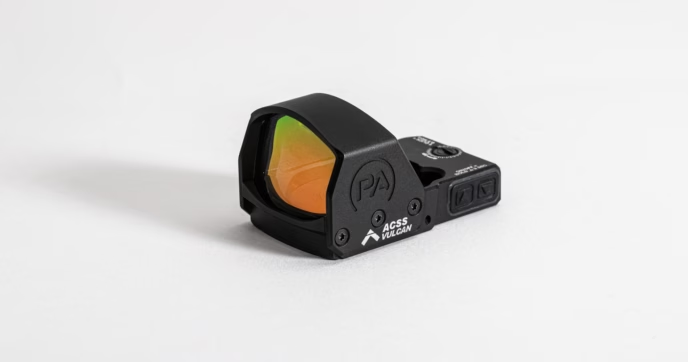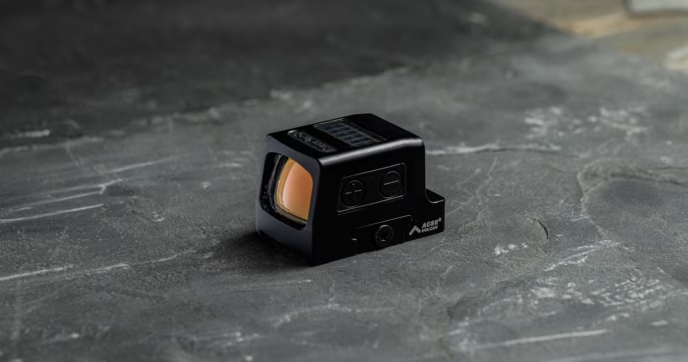When it comes to tactical rifle scopes, there are two dominant categories: Low Power Variable Optics (LPVOs) and precision rifle scopes. While they often serve different roles, both offer distinct advantages depending on mission requirements, rifle configuration, and shooter preferences. For professionals—whether in law enforcement, military, or security—the choice of optic can significantly influence effectiveness in the field.
Choosing between these two categories isn’t just a technical decision; it’s a functional one. Optics affect how quickly you can acquire a target, how well you can observe your surroundings, and how accurately you can engage at various distances. LPVOs offer speed and flexibility, while precision rifle scopes deliver clarity and control at long range.
This article aims to explore the strengths, limitations, and use cases of LPVOs and precision scopes. Along the way, we’ll showcase proven products like the Primary Arms SLx 1-6 Nova the Nightforce ATACR 5-25x56mm—favorites among professional users for their dependability and performance.
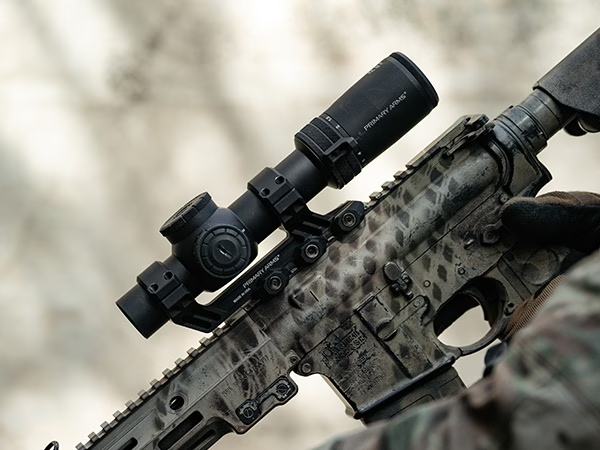
Understanding LPVO Scopes
LPVO stands for Low Power Variable Optic. These scopes are engineered to offer variable magnification that begins at a true 1x—allowing for both-eyes-open shooting—and typically maxes out between 4x and 10x. At 1x, an LPVO gives the shooter rapid target acquisition and a wide field of view, similar to a red dot. As magnification increases, it transforms into a capable mid-range optic, making it ideal for a wide range of scenarios.
An example is the Primary Arms SLx 1-6x24mm SFP with the ACSS Nova reticle. This optic features a fiber wire reticle that combines intuitive MIL holdovers, wind dots, and range estimation. It’s optimized for use on carbines like the AR-15 and allows seamless transition between close-quarters and mid-range engagements.
One of the most important benefits of LPVOs is speed. In fast-moving, close-quarter environments—like those encountered during building entries or vehicle stops—LPVOs provide the situational awareness and reflexive aiming necessary to make critical decisions quickly. At the same time, they offer magnification flexibility when it’s time to observe or engage at 200+ yards.
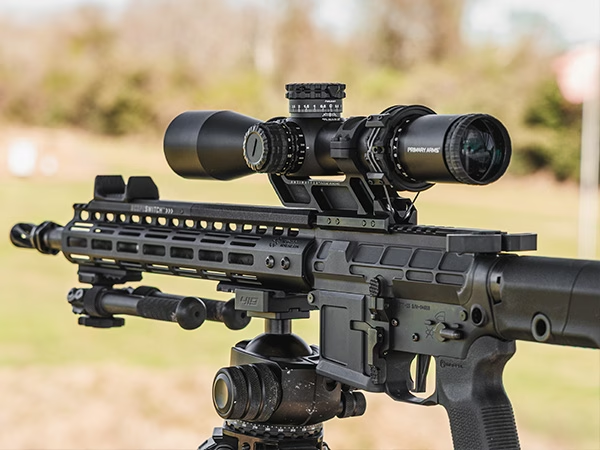
Precision Rifle Scopes Explained
Where LPVOs trade in versatility, precision rifle scopes emphasize clarity and fine control at long distances. These scopes usually start around 3x magnification and extend beyond 25x, offering greater detail and the ability to make fine adjustments for wind, bullet drop, and parallax. Precision scopes are built on either 30mm or 34mm tubes, use larger objective lenses for light transmission, and include advanced turret systems for elevation and windage adjustments.
Precision rifle scopes shine in static or overwatch positions. Law enforcement snipers using scopes like the Nightforce ATACR 5-25x56mm Rifle Scope benefit from its detailed MIL-XT reticle, zero-stop turrets, and consistent optical clarity. These tools allow for repeatable long-distance shots, making them essential for hostage rescue overwatch, rural interdiction, and surveillance.
Alternatively, the Primary Arms SLx 5-25x56mm ACSS Athena Rifle Scope brings long-range capability to a more accessible price point. It features a highly functional MIL-based reticle with intuitive hash marks, elevation holds, and wind correction tools—all in a rugged, duty-rated body.
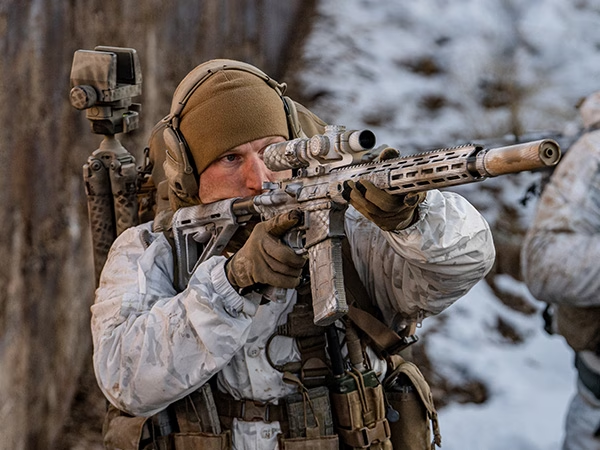
Use Case: LPVO on Patrol Rifles
In law enforcement settings, a patrol rifle equipped with an LPVO provides unmatched versatility. Imagine an officer arriving at a scene involving an armed suspect. At 1x magnification, the LPVO allows rapid scanning, situational awareness, and accurate shooting within close quarters. If the suspect moves behind cover or beyond 100 yards, the officer can instantly increase magnification for a clearer view, enhancing both safety and accuracy.
The Primary Arms PLx 1-8x24mm ACSS Compact Rifle Scope reticle is an excellent candidate for this role. With an ultra-compact body, advanced reticle, and premium Japanese glass, it ensures clarity even under pressure.
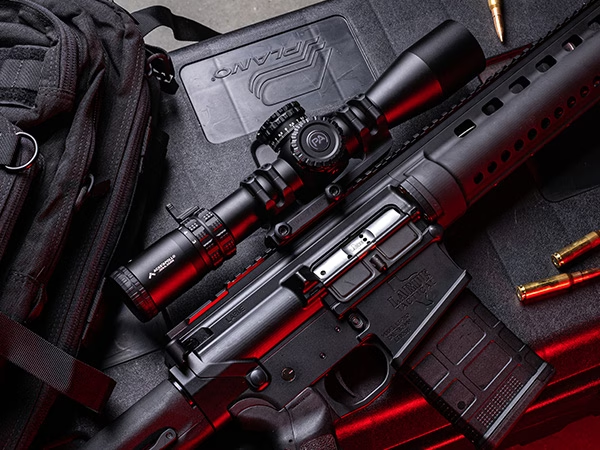
Use Case: Precision Scopes for DMRs
On the flip side, consider a marksman supporting a SWAT entry team from an elevated position. With a precision scope like the Nightforce ATACR, the marksman can observe and engage threats with improved precision. With first focal plane reticles, elevation and windage adjustments remain accurate throughout the magnification range, enabling consistent target engagement regardless of the zoom level.

LPVO vs Precision Scope Features: Turrets, Glass, and Focal Planes
The internal mechanics of a scope make a difference. LPVOs often use capped turrets and second focal plane (SFP) reticles to preserve simplicity and reticle visibility at low power. For precision optics, FFP is the standard, as shooters rely on subtensions for dope and holds.
Turrets also matter. LPVOs prioritize speed and compactness, so they rarely offer high-profile turrets for dialing. Precision scopes demand this functionality—repeatable elevation knobs with tactile clicks are essential.
Glass clarity, coatings, and objective lens size are also key differentiators. Precision optics offer better light transmission and resolution at distance, which makes them superior for target identification in low-light scenarios. With LPVOs, field of view and eyebox tend to be more important, as these optics have to be quicker in close quarters.
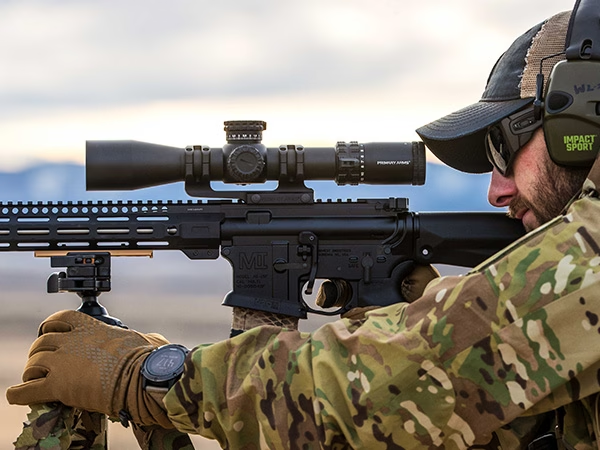
Mounting and Zeroing Considerations
No matter which optic you choose—LPVO or precision rifle scope—correct mounting and zeroing are non-negotiable for reliable performance. A poorly mounted scope, regardless of quality, can result in shifting point of impact, inconsistent groupings, and unreliable adjustments.
For LPVOs, a lightweight yet rugged mount that provides the correct eye relief and eye position is key. Many professional users prefer cantilever mounts, especially when using AR-15 platforms, as they help position the optic forward enough to get the full range of eye relief. Most of these mounts are 1.55” height, though some are offered as high as 1.93”, which gives a slightly more ‘heads-up’ posture when shooting.
Precision scopes require slightly more attention to detail. Unlike LPVOs, most precision scopes are mounted with separate rings, which sit much closer to the receiver for improved long-range accuracy. Ring spacing, torque settings, and scope leveling all play a part in whether your reticle stays true from different shooting positions. A canted scope can lead to significant misses at long range.
Zeroing for precision scopes is typically done at 100 yards, providing a stable baseline for data collection. Shooters often “true” their rifles by recording elevation data at increasing distances to develop a ballistic profile. Tools like ballistic calculators and chronographs are frequently used alongside the optic to ensure real-world alignment with reticle subtensions or turret values.
Scope mounting also affects durability and repeatability. Choosing quality rings and mounts is just as important as the optic itself. Brands like ADM, Badger Ordnance, and Scalarworks are common in professional setups, offering rock-solid mounting solutions with quick-detach options for modular configurations.
Training and Familiarity
Another aspect often overlooked in optic selection is training. Even the best scope is ineffective without adequate time behind it. LPVOs are generally easier to train with due to their simplified interface and wide field of view. Precision scopes, while more complex, offer enormous potential in trained hands.
Departments adopting new optics should plan to invest in magnified optic training. Topics like range estimation, reticle use, turret adjustment, and wind reading are essential skills, especially in mission-critical contexts.
As aforementioned, mounting is also an important component of training. Different individuals might need slightly different mounting configurations, depending on things like arm length and their personal rifle setup.
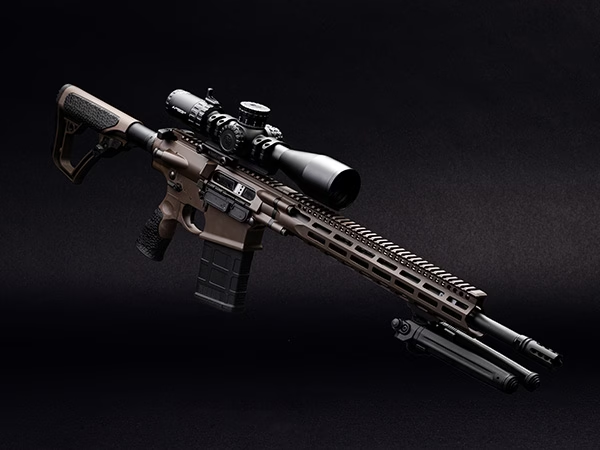
Budget and Procurement Considerations
For many agencies and individual officers, budget plays a major role in determining what equipment gets issued or purchased. Fortunately, Primary Arms Government offers options across a broad price spectrum without compromising performance.
Furthermore, departments and qualified individuals can take advantage of various Primary Arms Government programs. This includes access to:
– Military and Law Enforcement Discounts
– Individual Officer Purchase (IOP) Programs
– Test and Evaluation (T&E) Units
– Trade-in options for outdated gear
– Fast quotes and procurement assistance
Individuals can also take advantage of the Primary Arms Optics Premier Savings Program for unique, once-per-year discounts on rifle scopes, making high-performance optics, mounts, and accessories far more affordable.
Final Thoughts
Whether you’re mounting a rifle for entry, overwatch, or general-purpose defense, the optic you choose matters. But so does how you mount it, how you train with it, and how you maintain it.
LPVOs bring unmatched flexibility and speed, giving you CQB readiness with mid-range utility. Precision scopes offer clear, repeatable control at distance, ideal for roles where observation and pinpoint accuracy make the difference.
No matter your mission profile, Primary Arms Government has an optic—and a support program—to get you squared away. Between the Premier Savings Program, First Responder Discounts, and industry-vetted product lines, you can be confident you’ll get the best pricing on high-performance scopes.
